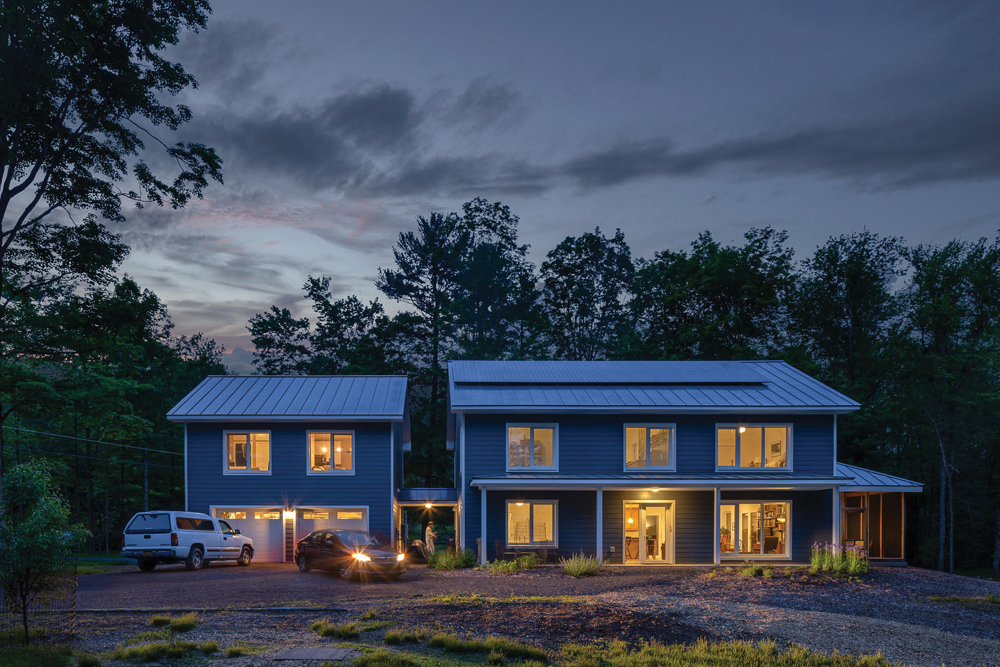Benefits of Passive House Construction
By Staff | Spring 2021 | High-Performance House
While the upfront building costs of passive house design may be steeper than standard construction, there are a slew of benefits both local to the home and global that make this investment worthwhile. Here we explore the benefits of passive house construction, incentives, and resources for getting started on your journey to net-zero housing.
Benefits of Passive House Construction
Long-Term Cost Savings
Even as building energy codes require higher insulation levels and greater air-tightness, the Passive House standard provides a 40 percent to 90 percent reduction in energy consumption when compared to a code-built home. This directly translates into smaller mechanical equipment (cost savings) and much smaller energy bills, if any at all. Passive House paired with renewables is a clear path to net-zero energy or net positive, where excess electricity can be sold back to the power grid.
Reduced Carbon Emissions
Less energy use translates directly to less carbon emitted into the earth’s atmosphere. According to the AIA Architecture 2030 plan, the building sector accounts for roughly 40 percent of our total global carbon emissions. Irreparable climate disaster is in our not-so-distant future if we cannot put a cap on carbon emissions. Passive House is the best way to achieve those goals.
Increased Durability
In the old way of building, we created a leaky building envelope and then oversized our heating equipment. When the building envelope is sealed and super-insulated the movement of water vapor can no longer have a direct avenue to dry out and can cause serious durability issues. Passive House is based on good building science and all assemblies, windows and mechanical systems are verified to be free from condensation risk.
Improved Thermal Comfort
Thermal comfort is determined by the surface temperature of a surface. If it is within seven degrees of the living area, most people will find that to be very comfortable. Every interior surface in a Passive House is verified to fall within this comfort criteria—even the glass of the windows. This results in more comfortable usable floor area and more even temperature distribution throughout the entire building. At the same time, humidity levels remain within a comfortable range.
Superior Indoor Air Quality
A requirement for Passive House certification is a balanced ventilation system. These systems, known as HRVs or ERVs (heat/energy recovery ventilators) bring fresh air in from the outside, move it throughout the house, and then expel the stale air to the outside. In the process, the air is filtered with a MERV 13 filter (minimum requirement) which has proven to drastically reduce allergens and other particulates from the air we breathe. With the EPA’s Indoor airPLUS program as a prerequisite for Passive House certification, the topmost air quality is guaranteed through material selection (VOC control), radon mitigation, and mold control. Occupants of Passive Houses often experience less respiratory issues including allergies and asthma.
The Path to Net-Zero
A prerequisite for Passive House certification is the Department of Energy’s Zero Energy Ready Home program. Whether renewable energy is immediately installed on the project or not, it is engineered for the smallest energy demand possible so that net-zero energy consumption can easily be achieved.
